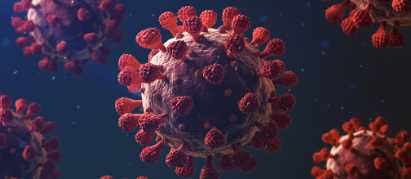The family Coronaviridae order Nidovirales of viruses includes coronaviruses, which are known to cause respiratory and gastrointestinal illness in a variety of mammalian and avian species. Human coronaviruses are the species of coronaviruses that have been identified as infecting humans (HCoVs). While emerging viruses, such as the severe acute respiratory syndrome coronavirus (SARS-CoV-2), have recently caused a global pandemic, HCoVs have historically been a prominent cause of the common cold.
In this article, we go over the biology, pathology, epidemiology, symptoms, diagnosis, and therapy of the coronavirus illness (COVID-19), as well as recent clinical trials exploring potential remedies. Coronavirus, respiratory droplets, upper respiratory tract infections, COVID-19, outbreak. A class of positive-sense, enveloped RNA viruses known as coronaviruses infect mammals and birds and cause a variety of diseases. Within the Nidovirales order, which includes the families Coronaviridae, Arteriviridae, Mesoniviridae, and Roniviridae, these viruses make up the bulk of the population.
Coronaviruses are distinguished structurally by their club-like glycoprotein spikes that protrude from the exterior of their envelope and their exceptionally large RNA genome. Because of these spikes, the ultrastructure of the coronavirus has a distinctive appearance that resembles the solar corona. Human coronaviruses (HCoV), which were initially discovered in 1965, have lately become well-known due to their involvement in widespread outbreaks.
The biology of coronaviruses
Coronaviruses are positive-strand, enclosed RNA viruses with genomes up to 33.5 kilobases (kb), which are the biggest RNA virus genomes. The trimeric S glycoproteins on the pleomorphic (round or oval) outer membrane of the severe acute respiratory syndrome coronavirus 2 (SARS-CoV-2) distinguish it from other coronaviruses.
The structural proteins M and E make up the viral envelope, whereas the genome is associated with protein. It is believed that the virus's intricate structure helps to explain how it can last up to three hours in aerosols. In order for the virus to attach to the ACE2 receptor, an intermembrane receptor frequently found on epithelial cells and type II pneumocytes in the lower respiratory tract (LRT), it must project spike-like S proteins from the virus's surface. Functional studies have also shown that SARS-CoV-2 S proteins enter the host cell by ACE2 as well as transmembrane serine protease.
Following attachment via the S glycoprotein's receptor-binding domain (RBD), the S protein goes through significant conformational changes that enable the virus to be endocytosed and replicate inside the cell's cytoplasm.SARS-CoV-2 replicates utilising a technique of continuous RNA synthesis, like other coronaviruses, but carries out transcription through a discontinuous process that is exclusive to the RNA virus world and is a distinguishing characteristic of the Nidovirales order.
The crucial coronavirus N protein RNA chaperone, which increases transcription efficiency, is one of many mechanisms that control discontinuous transcription in the coronavirus. The discontinuous transcription process makes it easier to maintain the big genome along with the proofreading apparatus encoded by coronaviruses.
Treatment
Treatment varies according to the severity of the condition, including COVID-19 symptoms that are mild, moderate, severe, or critical. The following sections describe the various clinical manifestations of the SARS-CoV-19 virus and their corresponding therapy management regimens. For each clinical manifestation, the WHO has developed clinical management guidelines, which are each listed below in detail.
Summary
The influenza pandemics of 1918, 1957–1958, and 1968–1970, as well as the present HIV/AIDS pandemic, are the deadliest in recent memory, with over one million confirmed deaths. COVID–19 is the deadliest pandemic of the twenty-first century. Global disruptions in education, business, and healthcare are only a few of the long-lasting, pervasive socio economic repercussions of this outbreak.
It is obvious that there is a need for efficient diagnostic and therapeutic approaches based on knowledge of the pathophysiology and microbiology of this virus. In conclusion, coronaviruses are a group of enclosed RNA viruses with a large genome and distinctive spikes on their glycoproteins. Coronaviruses have proofreading machinery that is specific to them and required to maintain their rather big genome. This machinery aids in the replication of the coronavirus genome.




Leave Comment